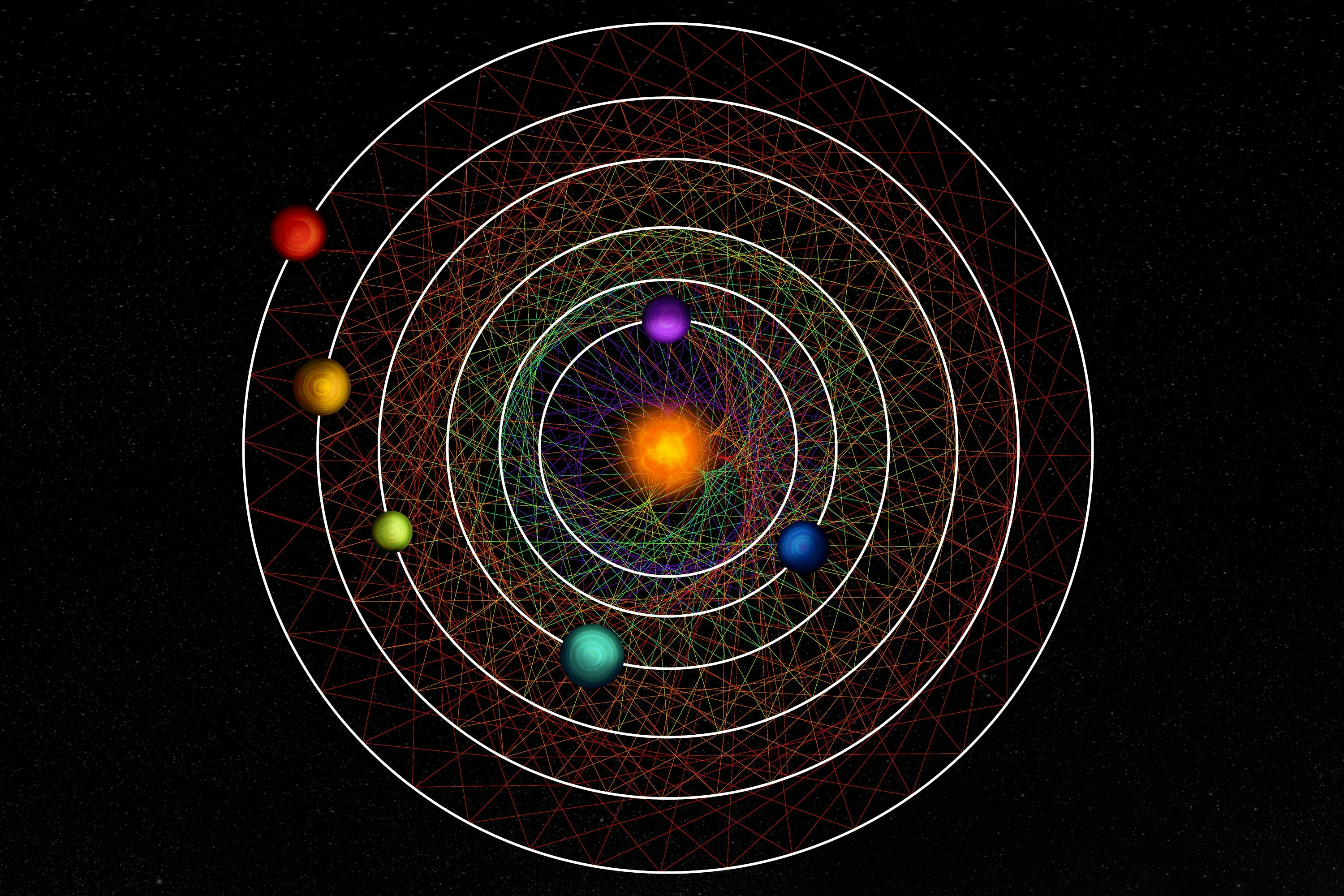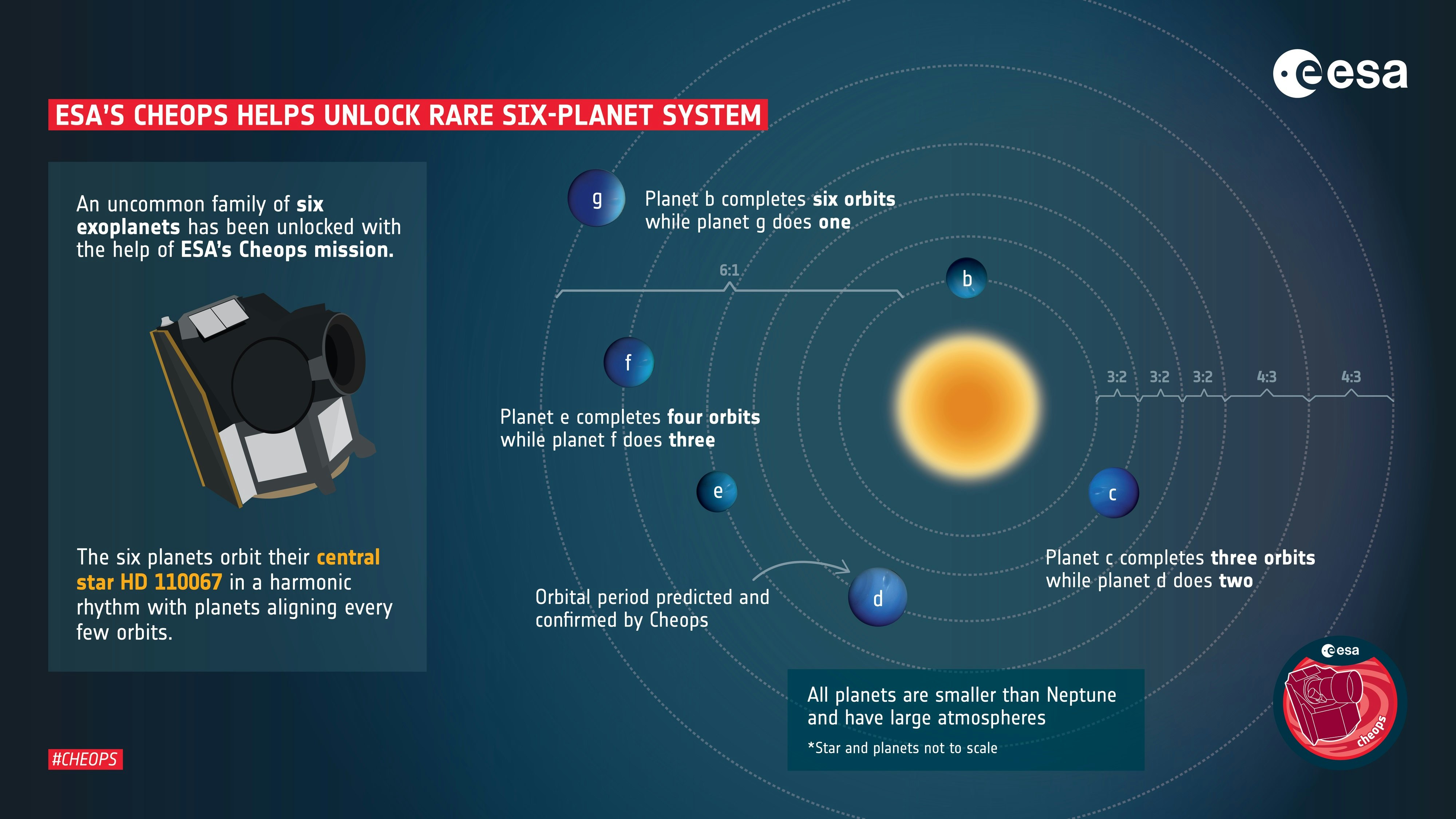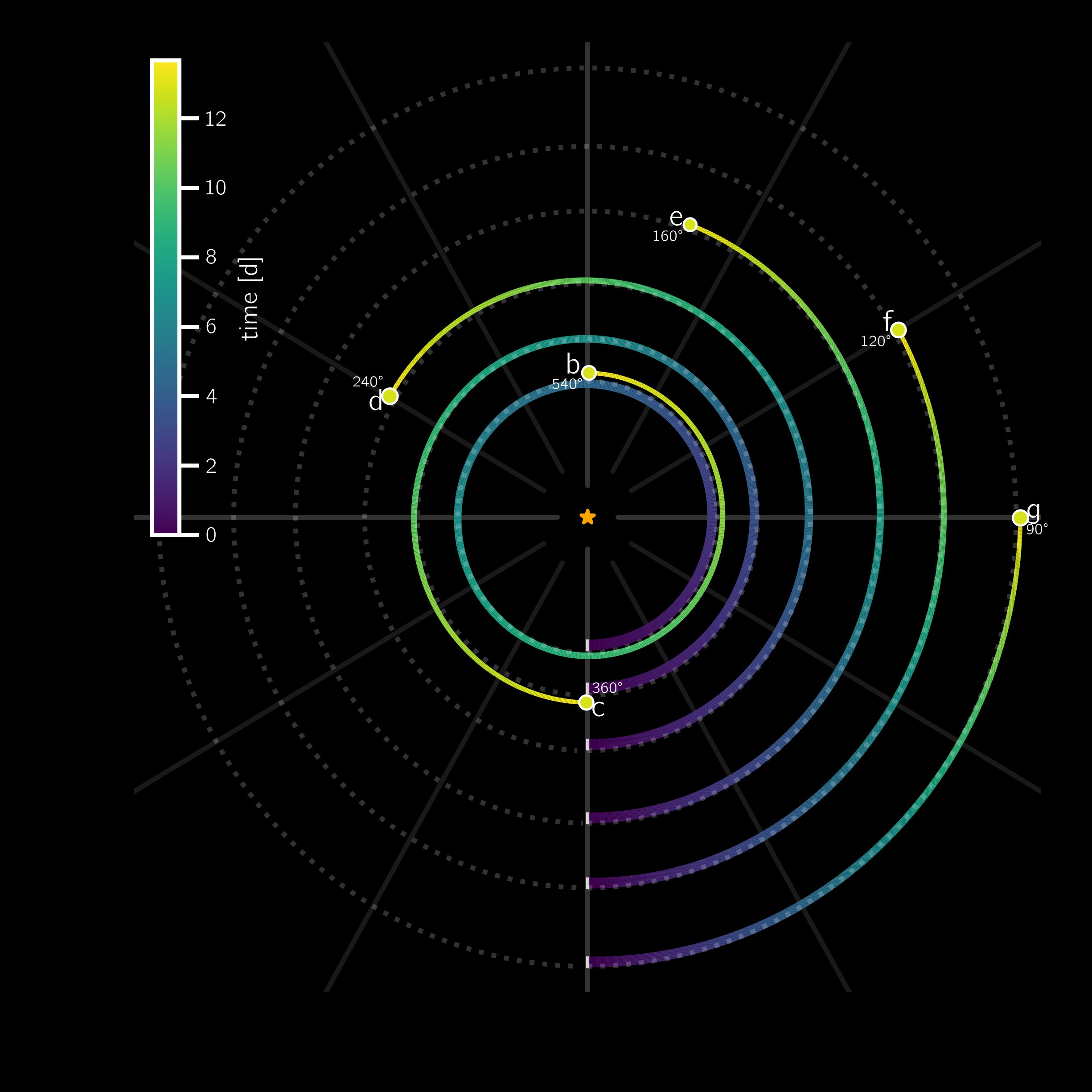
Astronomer Rafael Luque, of the University of Chicago, and his colleagues recently discovered six planets orbiting a nearby star in a series of resonant orbits, like exquisitely-balanced cosmic clockwork. All six belong to an enigmatic type of planet called “sub-Neptunes” — planets larger than Earth but smaller than Neptune — which seem to be very common everywhere in the Universe except here in our Solar System.
At first glance, the HD110067 system looks like an astronomically unlikely coincidence (or maybe an alien signal), but Luque and his colleagues say this is what most star systems look like in their earliest years of life.

Planets Moving Like Clockwork
When Luque and his colleagues looked at data from NASA’s Transiting Exoplanet Survey Satellite, they knew they had found a system of planets. Shadows passed in front of the nearby star HD 110067 every few days. At first, they surmised it was just two planets, each on a different orbit around the star. But a second look revealed the two planets seemed to have fully changed their orbits.
“It really was a mystery up until we solved it earlier this year,” says University of Bern astronomer Hugh Osborn, a co-author of the recent study, in a press conference.
The solution to the mystery arrived in the form of a third planet, which the team spotted in follow-up observations with ESA’s CHaracterising ExOPlanet Satellite (or CHEOPS, an excellent satellite burdened with some unfortunate capitalization choices). They realized that the three planets were in a chain of orbital resonances. For every three orbits the innermost planet would make, the next planet out would make two orbits. And every time that second planet would make three orbits, the next planet out would make two orbits.
Knowing that the whole system seemed to be lined up this way, Luque and his colleagues were able to predict how long the orbits of other planets around HD 110067 should be. In the end, they found six planets in what they describe as “a very precise waltz” — a system whose delicate orbital clockwork has been ticking along in perfect synchronization for the last two to four billion years.
A Chain of Alien Worlds
The six planets range from about two to nearly three times as wide as Earth, which puts them firmly in the realm of super-Earths if they’re mostly rocky, or sub-Neptunes if they’re mostly gas or liquid. Luque and his colleagues have measured the mass of three planets so far, by watching how each planet’s gravity pulls at the star, causing the star to wobble a bit. Based on those measurements, the planets are denser than Neptune, but less dense than Earth.
In other words, they’re probably mostly gas around a small core of rock, ice, or metal, but there’s a chance of liquid down there somewhere, too.
So far, that’s about all we know about sub-Neptunes in general. This type of planet seems to be extremely common in the universe, but our Solar System ended up without one. HD 110067 could be the perfect place to learn more, with help from NASA’s James Webb Space Telescope (JWST) — and those perfectly-timed resonant orbits are part of the reason.

A Star System in Mint Condition
This isn’t the first place in the universe that astronomers have found moons or planets with resonant orbits. For instance, for every orbit Jupiter’s moon Europa completes, another nearby moon called Io completes two orbits. For every two orbits completed by Europa, Ganymede — the next moon out — completes two, giving them a 4:2:1 resonance. There’s even another planetary system, K2-138, which has an entire fleet of planets in resonance.
“When we try to model the formation of solar systems, we obtain resonant systems all the time,” says University of Bern astronomer Adrien Leleu, also a co-author of the recent study, in the press conference. Based on simulations, it looks like the way newborn planets interact with the disk-shaped cloud of dust and gas around a young star just naturally ends up with those planets tugging each other into resonant orbits.
But resonances are delicate arrangements, and once they’re broken, they can’t be fixed.
In nearly every star system astronomers know of, planets have been knocked out of their original resonances by a whole series of catastrophes: giant Jupiter-sized planets form and throw the whole system’s gravity out of whack, or a passing star’s gravity throws everything into disarray, or a giant impact knocks a planet out of place. That’s how we end up with un-resonant orbits, most of which are also tilted on slightly different planes: our Solar System, like most, has been through some stuff.
But HD 110067 apparently hasn’t been through much. It’s still in mint condition.
“The evolution of this system has been very quiet, very gentle,” says Luque in the press conference. That means the system is basically a living fossil that astronomers can use to study how and where, in relation to each other and their stars, planets form, especially enigmatic sub-Neptunes.
What’s Next?
The real answers will come from JWST in the next few years; at least that is what Luque and his colleagues hope.
Because all six of these planets transit in front of a relatively bright star (HD 110067 is just slightly dimmer than our Sun), and they seem to have thick, puffy atmospheres, they’re perfect targets for JWST’s instruments to measure which wavelengths of starlight filter through each planet’s atmosphere – and which wavelengths get absorbed. That will reveal which chemical compounds make up each planet’s gassy outer layers.
If Luque and his colleagues are right, the future JWST data will be our first chance to really come to grips with what sub-Neptunes are made of.







